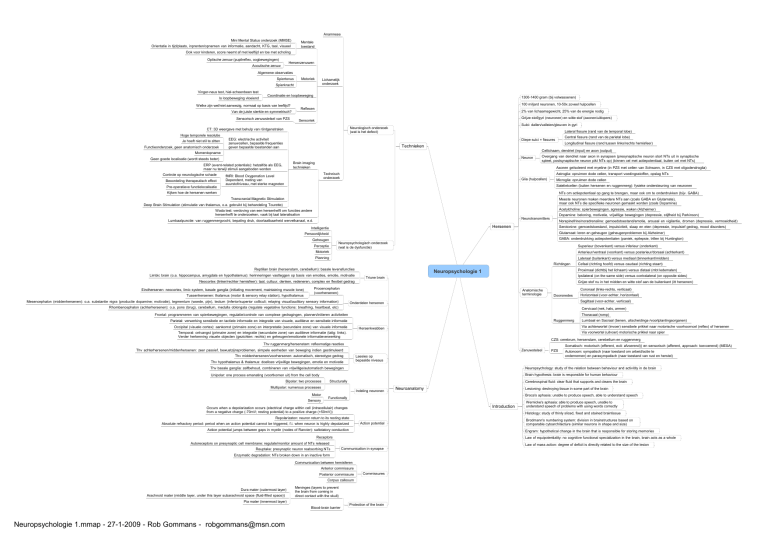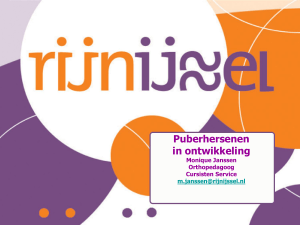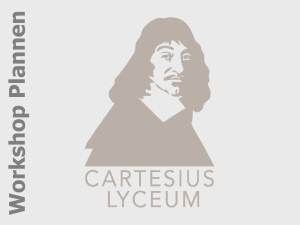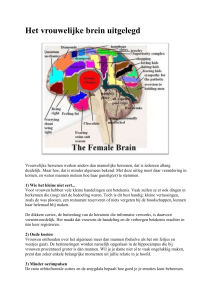
Anamnese
Mini Mental Status onderzoek (MMSE)
Mentale
toestand
Orientatie in tijd/plaats, inprenten/opnemen van informatie, aandacht, KTG, taal, visueel
Ook voor kinderen, score neemt af met leeftijd en toe met scholing
Optische zenuw (pupilreflex, oogbewegingen)
Hersenzenuwen
Acoutische zenuw
Algemene observaties
Spiertonus
Motoriek
Lichamelijk
onderzoek
Spierkracht
Vinger-neus test, hiel-scheenbeen test
Is loopbeweging vloeiend
Coordinatie en loopbeweging
Welke zijn wel/niet aanwezig, normaal op basis van leeftijd?
Van de juiste sterkte en symmetrisch?
Sensorisch zenuwstelsel van PZS
1300-1400 gram (bij volwassenen)
100 miljard neuronen, 10-50x zoveel hulpcellen
Reflexen
2% van lichaamsgewicht, 25% van de energie nodig
Grijze stof/gyri (neuronen) en witte stof (axonen/uitlopers)
Sensoriek
Hoge temporele resolutie
Je hoeft niet stil te zitten
Functieonderzoek, geen anatomisch onderzoek
Sulci: dallen/valleien/gleuven in gyri
Neurologisch onderzoek
(wat is het defect)
CT: 3D weergave met behulp van röntgenstralen
EEG: electrische activiteit
zenuwcellen, bepaalde frequenties
geven bepaalde toestanden aan
Lateral fissure (rand van de temporal lobe)
Longitudinal fissure (rand tussen links/rechts hemisfeer)
Technieken
Cellichaam, dendriet (input) en axon (output)
Momentopname
Neuron
Geen goede localisatie (wordt steeds beter)
Brain imaging
technieken
ERP (event-related potentials): hetzelfde als EEG,
maar nu terwijl stimuli aangeboden worden
Controle op neurologische schade
Beoordeling therapeutisch effect
Pre-operatieve functielocalisatie
Central fissure (rand van de parietal lobe)
Diepe sulci = fissures
Overgang van dendriet naar axon in synapsen (presynaptische neuron stort NTs uit in synaptische
spleet, postsynaptische neuron pikt NTs op) (binnen cel met actiepotentiaal, buiten cel met NTs)
Axonen geïsoleerd met myeline (in PZS met cellen van Schwann, in CZS met oligodendroglia)
Technisch
onderzoek
fMRI: Blood Oxygenation Level
Dependent, meting van
zuurstofniveau, met sterke magneten
Astroglia: opruimen dode cellen, transport voedingsstoffen, opslag NTs
Glia (hulpcellen)
Microglia: opruimen dode cellen
Satelietcellen (buiten hersenen en ruggenmerg): fysieke ondersteuning van neuronen
Kijken hoe de hersenen werken
NTs om actiepotentiaal op gang te brengen, maar ook om te onderdrukken (bijv. GABA)
Transcranial Magnetic Stimulation
Meeste neuronen maken meerdere NTs aan (zoals GABA en Glutamate),
maar ook NTs die specifieke neuronen gemaakt worden (zoals Dopamine)
Deep Brain Stimulation (stimulatie van thalamus, o.a. gebruikt bij behandeling Tourette)
Acetylcholine: spierbewegingen, agressie, waken (Alzheimer)
Wada test: verdoving van een hersenhelft om functies andere
hersenhelft te onderzoeken, vaak bij taal lateralisation
Dopamine: beloning, motivatie, vrijwillige bewegingen (depressie, stijfheid bij Parkinson)
Neurotransmitters
Lumbaalpunctie: van ruggenmergvocht, bepaling druk, doorlaatbaarheid wervelkanaal, e.d.
Norepinefrine/noradrenaline: gemoedstoestand/emotie, arousal en vigilantie, dromen (depressie, vermoeidheid)
Hersenen
Intelligentie
Serotonine: gemoedstoestand, impulsiviteit, slaap en eten (depressie, impulsief gedrag, mood disorders)
Glutamaat: leren en geheugen (geheugenproblemen bij Alzheimer)
Persoonlijkheid
GABA: onderdrukking actiepotentialen (paniek, epilepsie, trillen bij Huntington)
Geheugen
Neuropsychologisch onderzoek
(wat is de dysfunctie)
Perceptie
Superieur (bovenkant) versus inferieur (onderkant)
Motoriek
Anterieur/ventraal (voorkant) versus posterieur/dorsaal (achterkant)
Planning
Lateraal (buitenkant) versus mediaal (binnenkant/midden)
Richtingen
Reptilian brain (hersenstam, cerebellum): basale levensfuncties
Limbic brain (o.a. hippocampus, amygdala en hypothalamus): herinneringen vastleggen op basis van emoties, emotie, motivatie
Ipsilateral (on the same side) versus contralateral (on opposite sides)
Triune brain
Neocortex (linker/rechter hemisfeer): taal, cultuur, denken, redeneren, complex en flexibel gedrag
Eindhersenen: neocortex, limic system, basale ganglia (initiating movement, maintaining muscle tone)
Tussenhersenen: thalamus (motor & sensory relay station), hypothalamus
Grijze stof nu in het midden en witte stof aan de buitenkant (itt hersenen)
Procencephalon
(voorhersenen)
Anatomische
terminologie
Mesencephalon (middenhersenen): o.a. substantie nigra (productie dopamine; motivatie), tegmentum (woede, pijn), tectum (inferior/superior colliculi; relaying visual/auditory sensory information)
Cefaal (richting hoofd) versus caudaal (richting staart)
Proximaal (dichtbij het lichaam) versus distaal (mbt ledematen)
Neuropsychologie 1
Coronaal (links-rechts, verticaal)
Doorsnedes
Horizontaal (voor-achter, horizontaal)
Sagittaal (voor-achter, verticaal)
Onderdelen hersenen
Rhombencephalon (achterhersenen): o.a. pons (brug), cerebellum, medulla oblongata (regulate vegetative functions: breathing, heartbeat, etc)
Cervicaal (nek, hals, armen)
Thoracaal (romp)
Frontal: programmeren van spierbewegingen, regulatie/controle van complexe gedragingen, plannen/initieren activiteiten
Ruggenmerg
Parietal: verwerking sensibele en tactiele informatie en integratie van visuele, auditieve en sensibele informatie
Occipital (visuele cortex): aankomst (primaire zone) en interpretatie (secundaire zone) van visuele informatie
Lumbaal en Sacraal (benen, uitscheidings-/voortplantingsorganen)
Via achterwortel (invoer) sensibele prikkel naar motorische voorhoorncel (reflex) of hersenen
Hersenkwabben
Via voorwortel (uitvoer) motorische prikkel naar spier
Temporal: ontvangst (primaire zone) en integratie (secundaire zone) van auditieve informatie (talig: links).
Verder herkenning visuele objecten (gezichten: rechts) en geheugen/emotionele informatieverwerking
CZS: cerebrum, hersenstam, cerebellum en ruggenmerg
Thv ruggenmerg/hersenstam: reflexmatige reacties
Somatisch: motorisch (efferent, exit: afvoerend)) en sensorisch (afferent, approach: toevoerend) (MESA)
Zenuwstelsel
Thv achterhersenen/middenhersenen: zeer passief, bewustzijnsproblemen, simpele eenheden van beweging indien gestimuleerd
Thv middenhersenen/voorhersenen: automatisch, stereotype gedrag
Laesies op
bepaalde niveaus
Thv hypothalamus & thalamus: doelloze vrijwillige bewegingen, emotie en motivatie
PZS
Autonoom: sympatisch (naar toestand om arbeid/actie te
ondernemen) en parasympatisch (naar toestand van rust en herstel)
Thv basale ganglia: zelfbehoud, combineren van vrijwillige/automatisch bewegingen
Neuropsychology: study of the relation between behaviour and activitity in de brain
Unipolar: one process emanating (voortkomen uit) from the cell body
Brain hypothesis: brain is responsible for human behaviour
Bipolar: two processes
Structurally
Cerebrospinal fluid: clear fluid that supports and cleans the brain
Multipolar: numerous processes
Indeling neuronen
Motor
Sensory
Broca's aphasia: unable to produce speech, able to understand speech
Introduction
Repolarizaton: neuron return to its resting state
Action potential
Action potential jumps between gaps in myelin (nodes of Ranvier): saltotatory conduction
Receptors
Law of equipotentiality: no cognitive functional specialization in the brain, brain acts as a whole
Law of mass action: degree of deficit is directly related to the size of the lesion
Communication in synapse
Enzymatic degradation: NTs broken down in an inactive form
Communication between hemisferen
Anterior commissure
Posterior commissure
Commissures
Corpus callosum
Meninges (layers to prevent
the brain from coming in
direct contact with the skull)
Pia mater (innermost layer)
Blood-brain barrier
Neuropsychologie 1.mmap - 27-1-2009 - Rob Gommans - [email protected]
Brodmann's numbering system: division in brainstructures based on
comparable cytoarchitecture (similar neurons in shape and size)
Engram: hypothetical change in the brain that is responsible for storing memories
Autoreceptors on presynaptic cell membrane: regulate/monitor amount of NTs released
Reuptake: presynaptic neuron reabsorbing NTs
Wernicke's aphasia: able to produce speech, unable to
understand speech of problems with using words correctly
Histology: study of thinly sliced, fixed and stained braintissue
Absolute refractory period: period when an action potential cannot be triggered, f.i. when neuron is highly depolarized
Dura mater (outermost layer)
Lesioning: destroying tissue in some part of the brain
Functionally
Occurs when a depolarization occurs (electrical charge within cell (intracellulair) changes
from a negative charge (-70mV; resting potential) to a positive charge (+50mV))
Arachnoid mater (middle layer, under this layer subarachnoid space (fluid-filled space))
Neuroanatomy
Protection of the brain
Het oog zelf
Oogbewegingen
Nervus opticus (blindheid in het oog)
Visuele stoornissen: problemen met
Tractus opticus (blindheid in een visueel halfveld)
Visuele cortex en andere gebieden
Retinitus pigmentosa
Macula degeneratie
Oogziekten
Hemianopsie
Glaucoma
Optic chiasm zit tussen (achter) nervus opticus en (voor) tractus opticus. Is het punt waar de
optische zenuwen zich gedeeltelijk kruisen (RVF uit rechteroog naar LH, LVF uit linkeroog naar RH)
Primary processing center for visual information received from the retina of the eye
Input: retina, maar vooral visuele cortex
Output: visuele cortex en associatiegebieden
Lateral Geniculate Nucleus
Located in the thalamus
LVF gaat naar rechter LGN; RVF gaat naar linker LGN
Bestaat uit meerdere lagen, buitenste lagen voor retinale magnocellen, binnenste lagen voor retinale parvocellen
Magnocellen: reageren snel, zijn activatie snel kwijt, zijn gevoelig voor licht, zijn kleurenblind -> beweging
Parvocellen: reageren langzaam, houden activatie langer aan, zijn ongevoelig voor licht, zien kleur -> kleur
Fovea: centraal punt voor scherp zicht, meest gevoelig voor licht
Receptors (rods & cones)
Five different
types of cells
Horizontal & amacrine cells (communication between receptor cells)
Bipolor cells (synapse on receptors and on retinal ganglion cells)
Retinal ganglion cells (axons leaving retina via optic nerve)
Active in dim light
Retina
Very sensitive to small fluctuations in light
Rods
Low acuity
Anatomie
Insensitive to colour and detail
Active in bright light
Insensitive to small fluctuations in light
Vision
Cones
High acuity
Sensitive to color and detail
Hypothalamus: voor het regelen van de biologische klok
Retinale axonen komen
ook uit in (naast LGN)
Pupil dilatatie: groter/kleiner worden van de pupil
Superior colliculus: voor het richten van ogen en hoofd naar een stimulus
V2: beweging (magno) en kleur (parvo), diepte
V3: volgen van bewegende objecten
V4: kleuren en vormen, patronen herkennen
Associatiegebieden
in visuele cortex
V5: beweging en orientatie
Input: magnocellen
Where pathway, onbewust
Input: parvocellen
What pathway, bewust
Dorsal stream (van achter naar
boven; occipital naar parietal)
Routes
Ventral stream (van achter naar
onder; occipital naar temporal)
Deficit in recognition not due to impairments in sensation, attention, language or general intelligence
Category-specific visual agnosia (f.i. can't distinquish between living and non-living things)
Agnosia
Colour agnosia: loss of knowledge about colour, not due to impairment of colour
discrimination, aphasia (inability to produce/comprehend language) or general intelligence
Visuele objecten niet als geheel kunnen zien
Apperceptive agnosia
Geen probleem met begrijpen van betekenis of het benoemen
Wel visuele objecten als geheel zien
Problemen met herkennen en benoemen van (functie van) objecten
Kunnen wel goed natekenen, maar weten dan niet wat ze nagetekend hebben
Gaat vaak samen met prosopagnosia
Associative agnosia
Vergelijkbaar: optic aphasia (like anomia: inability to
correctly name objects, yet specific to visual stimuli)
Stoornis in het herkennen van gezichten
Prosopagnosia
Vaak onopgemerkt omdat andere cues gebruikt worden om persoon te herkennen
Blindspot (scotoma): blind part of the visual field opposite to that of the damage
Blindsight
People actually don't see stimuli, but when asked what was presented in blindspot, 90% right: blindsight
Ontwikkeling van laterale dominantie
Unilateral (dominante organen aan dezelfde kant) versus mixed dominence
Ambidester: voorkeur hoeft niet altijd hetzelfde te zijn
Naar beide hemisferen, linkerdeel retina naar LH, rechterdeel retina naar RH.
Visuele halfvelden naar contralaterale hersenhelften
Visueel
Nasal hemiretina (closest to nose) and temporal hemiretina (closest to temples)
Naar beide hemisferen, maar contralaterale projecties krijgen voorrang
Dus...primaire bron voor auditieve informatie voor LH is rechteroor
Auditory
Tactiele stimulatie
Visuele halfveld stimulatie (tachistoscopische presentatie):
korte presentatie stimuli op een visueel halfveld
Dichotische luistertaken
Wada test
Technieken
TMS
Split-brain onderzoek
90% rechtshandingen en 75% linkshandigen links taaldominant
Linkerhemisfeer: taal, rekenen, logisch nadenken, muziek (analytisch luisteren)
Rechterhemisfeer: emotionele inhoud taal (prosody), spatiële vermogens,
gezichtsherkenning, visueel voorstellingsvermogen, muziek (globaal)
Spatial neglect: onvermogen om te reageren op stimulus die in visueel
halfveld (meestal LVH) aangeboden is, onbewust van beperking
Emotie: na LH beschadiging vaak depressie, na RH beschadiging vervlakking effect
RH beter in herkennen emotie, gezichten tonen beter emotie (muv boosheid) in de linkerkant van gezicht
Rechterhemisfeer gokt beter
Left brain interpreter: LH belangrijk voor interpretatie eigen handelen, maakt één verhaal van de acties van verschillende neuronale netwerken
LH matures earlier than RH
RH is larger & heavier than LH
LH more gray matter relative to white matter than in the RH
General
anatomical trends
LH exhibits greater cell packing density than RH
Spatial frequency hypothesis: two hemispheres differ in their
ability to process the basic sensory attributes of various stimuli
Neuropsychologie 2.mmap - 27-1-2009 - Rob Gommans - [email protected]
Lateralisation
Neuropsycholo
Nociceptie (pijn, temperatuur)
Hapsis (aanraking, druk)
Proprioceptie (bewustzijn van plaatsing lichaam in ruimte)
Somatosensorische zintuigen
Twee routes
Dorsale spinothalamische route (hapsis, proprioceptie)
Ventrale spinothalamische route (nociceptie)
Van ruggenmerg naar thalamus naar rest van hersenen, terug niet via thalamus
Motorisch systeem van abstract (dorsolateral prefrontal cortex) naar minder abstract (primary motor cortex)
Integreren info over eigen beginposities van lichaamsdelen en
posities van externe objecten (mental picture of the body in space)
Input: visuele cortex, auditory cortex, somatosensory cortex
Posterior
(achter)
parietal cortex
Parietaalschors: verwerking sensibele
en tactiele info, integratie van visuele,
auditieve en sensibele info
Output: dorsolateral prefrontal cortex,
secondary motor cortex, primary motor cortex
Beschadigd: apraxie (op verzoek geen complexe motorische
taken uitvoeren; vooral tweezijdig bij beschadiging
linkerparietaalschors), neglect (veronachtzamen stimulie;
vooral eenzijdig bij beschadiging rechterparietaalschors)
Dorsolateral
(bovenop, buitenkant)
prefrontal cortex
Evalueren van externe stimuli, initieren vrijwillige
bewegingen (plan om te gaan bewegen)
Input: posterior parietal cortex
Output: secondary motor cortex, primary
motor cortex, posterior parietal cortex
Orbitofrontal (onderkant frontal cortex): motivatie gedrag
Programmeren specifieke bewegingen (stuurt bewegingen zelf niet aan)
Secondary
motor cortex
Onderdelen: supplementary motor area, premotor cortex en cingulate motor areas
(abstracter niveau, aandacht bepalen, wat aandacht nodig heeft eerst doen)
Output: primary motor cortex
Frontaalschors: programmeren
spierbewegingen, regulatie/controle
complexe gedragingen
Even active in imagining movements
Programmeren van enkelvoudige bewegingen, controle/coordinatie van spieren
Input: posterior parietal cortex
Primary
motor cortex
Output: hersenstam (brain stem motor nuclei), ruggenmerg (piramidebaan; corticospinal tract)
Door verbindingen met somatosensory areas
stereognosis mogelijk (ability to identify objects by touch)
Beschadiging: vermindering van snelheid, precisie en kracht (wel
nog beweging mogelijk; overgenomen door andere delen)
Coördinatie van spierbewegingen
Aanpassing motoriek aan omstandheden (bv lichaamshouding)
Lateral zone: coordinating multijoint movement
Cerebellum
Drie zones
Intermediate zone: guiding skilled limb movement (grasping, reaching)
Vermis: maintaining posture, coordinating whole-body movements
Sensorymotor system
Initiatin movement and maintaining muscle tone
Extra-piramidaal systeem: handhaven lichaamshouding, in gang zetten van
reeds geautomatiseerde bewegingen (zwemmen, fietsen, lopen, schrijven)
Onderdrukking van gedrag (inhibitie), invloed op de initiatie van bewegingen
Basale ganglia
gie 2
Input: premotor cortex, motor cortex, etc (bijna alle neocortexen) via putamen en caudate)
Output: thalamus (door globus pallidus) en premotor cortex en prefrontal cortex (door thalamus)
Onderdelen: caudate nucleus (schakelstation limbisch systeem en frontaalschors, bij beschadiging problemen
met gebruiken info uit frontaal schors, ook heel emotioneel reageren, emoties niet onder controle), putamen,
globus pallidus en subthalamic nucleus (onderdrukking gedrag) en substantia nigra (motivatie gedrag)
Two main systems of motor projections
Vestibulospinal tract: maintaining balance
Ventromedial system
Reticulospinal tract: maintaining posture
Tectospinal tract: controlling head and eye movements
Ruggenmerg
Lateral system
Rebruspinal tract: making movements of limbs and hands
Lateral corticospinal tract: controlling limb movement and extremities (fingers, toes)
Deficit in performing skilled voluntary movements
Ideomotor apraxia: inability to execute simple movement in respons to a command
Apraxia
Ideational apraxia: confusion or loss of knowledge about an object's use
Constructional apraxia: inability to construct a complex object
Oral apraxia: inability to perform skilled movement of face, eye, lips, cheeks, etc
Deficit in perceiving/recognizing objects through tactile information
Astereognosia
Basic tactile sensation remains intact
Akinesie of bradykinesie: te veel onderdrukking vanuit globus pallidus,
daardoor vermindere activatie van premotor cortex (directe route)
Ziekte van Huntington
Chorea (samentrekkingen, muscle spasms, te veel aan beweging): te weinig onderdrukking vanuit globus
pallidus, daardoor verhoogde activatie van premotor cortex (indirect route, via subthalamic nucleus)
Intellectual deterioration
Autosomaal dominant: niet sekse gebonden overerving
Tremor in rusttoestand (onvrijwillige bewegingen), akinesie / bradykinesie (loss in movement or slowness
of movement), rigiditeit (door continue aangespannen spieren) en houding (bij lopen, voorovergebogen)
Ziekte van Parkinson
Aftakeling van dopamine cellen in substantie nigra (vermindere vrijwillige bewegingen)
Motor and vocal tics
Palilalia: repetition of words
Tourette
Echolalia: repetition of words spoken by others
Copralalia: uttering obscenities
Non-linguistic vocalizations (sniffing, snorting, crying)
Increase in spontaneous movement (most pronounced in facial region)
Tardive dyskinesia
More a side effect of long-term use of anti-psychotic medication
Sensation: detection of some aspect of a stimulus in the environment
Perception: way in which we (or our brains) interpret the information that is gathered by the senses
Primary sensory cortex: receives input relayed through the thalamus from the senses
Sensory systems
Three main types of
sensory cortex
Secondary sensory cortex: receives much input from the primary sensory cortex
Association cortex: integrates information from more than one sense
Hierarchical organization
Organizing
principles
Each level of the organization contains functionally distinct cortical areas
Processing occurs in parallel throughout the cortex (flow of information stops at the point where the break occurs)
Emotie: mentale toestand die ontstaat als een voorafbestaande wens/doel
door gebeurtenissen in de wereld wordt gefrustreerd of juist wordt vervuld
Relatie motivatie - emotie: geleerd welk gedrag prettige gevoelens oproept, extra beloning (dopamine),
emoties helpen ons goede beslissingen te nemen, voorkomen onprettige gevoelens, evolutionair voordeel
Emoties helpen ons ook aandacht te geven aan en onthouden van belangrijke zaken
Emoties helpen ook sociale relaties te versterken/te onderhouden
Complexere emoties leren kk pas als ze een concept van zichzelf ontwikkeld hebben (volgorde:
blij, afkeer, pijn (0m), boos, verdriet (2m), bang (6m), later pas schuld. schaamte en trots)
Psysiological changes in body
Cognitive experiences of emotions
Emotional states
Basic emotions: happiness, sadness, fear, anger, surprise and disgust
James-Lange: cognitive aspects of emotional state are secondary to psysiological response
Cannon-Bard: cognitive aspects of affect could be experienced without psysiological changes
Schachter-Singer: cognitive processes are important in the production
of emotional states, context alerts individual in potential situations
Emoties
Somatic Marker (Damasio): somantic marker is association between
emotional state and bodily changes, basis on how we make decisions
Theories
Appraisal theory (Arnold): emotional states are process of cost-benefit analysis of situations
Somantic marker and appraisal theory good in explaining interaction between
feelings, emotions, conscious thought, because they boy emphasize role of
conscious and unconscious processing in producing emotions
Right hemisphere is dominant for both producing and expressing prosody
Right hemisphere is dominant for the perception and production of emotional facial expression
Lateralisation
Hypothalamus regulates autonomic and somatic components of an emotional state
Recognition of emotional facial expressions resutls in activity in amygdala
Amygdala: vooral angst, snelle (thalamus -> amygdala) en langzame (thalamus -> cortex -> amygdala) route
Anatomy
Orbitofrontale schors: helpt beloningswaarde van gebeurtenissen te
bepalen, helpt bij verwerking van emotionele info in sociale situaties
Probleem met het zien van een emotionele uitdrukking als een geheel (2nd order relations)
Weak-Central-Coherence theory
Autism
Sound: frequency (rate of vibrations), pitch (depending on altitude frequency), loudness (dB), complexity (timbre)
Ear: pinna (outer visible portion), hole (auditory meatus), eardrum (tympanic membrane), three
bones (malleus/hammer, incus/anvil, stapes/stirrup), oval window, cochlea, cochlear fluid
Outer ear: catch and amplify sound
Middle ear: transduce sound waves, variations in air pressure to mechanical energy
Three aspects of ear
Inner ear: mechanical energy turned into neural activity
No single, unitary language centre
Auditory, visual, productive and receptive language
Broca's area: frontal lobe, output of spoken language
Wernicke's area: temporal lobe, mapping sounds to words, ook nodig om
jezelf te corrigeren/controleren, als je jezelf hoort praten dus. Beschadigd:
betekenisloze spraak, geen comm. waarde
Arcuate fasciculus: connection between Broca's area and Wernicke's area to provide
meaninful verbal output, doorgesneden = niet meer kunnen nazeggen wat je hoort
Neur
Anatomy
Concept centre (Lichtheim): connected to BA and WA, ascribes meaning to sound
Language
Wernicke-Lichtheim-Geschwind model: now also provides for visual language,
included angular gyrus in occipital cortex, beschadigd = leesstoornis
Auditory language learned without formal instructions, visual language explicitely taught
Single-route models
Dual-route models
Visual language models
Use phoneme-grapheme conversion rules (phoneme: small meaninful unit of sound; grapheme: letters)
Propositional: cue semantic information
Affective: cue emotional content
Prosody: conveyance of meaning by varying intonation in
speech, right hemisfere specialized in detection of prosody
Aphasia/dysphasia: lack of language, partial loss of language
Broca's aphasia: inability to produce fluent speech, yet good comprehension, telegraphic speech
Anomia: inability to find the correct words
Hearing & Language processing
Agrammatism: inability to produce grammatically correct sentences
Semantic paraphasia: substitute similar sounds within a word (turnpike -> purnpike)
Wenicke's aphasia: meaning of speech severely compromised, random selection
of words, lack of meaningful content, neologisms (sound like words, but arent)
Language disorders
Conduction aphasia: inability to repeat words or phrases
Pure word deafness: inability to understand spoken language, patient thinks somebody is talking in a foreign language
Auditory sound agnosia: inability identifying environmental sounds
Alexia/dyslexia: lack of reading ability
Phonological alexia: unable to attribute the correct soud (phoneme) to the graphemes in written material,
make errors in visual paralexias: substitute too similar looking words, but not similar in meaning
Surface alexia: inpairment in reading irregular words
Reading disorders
Deep alexia: reading nonwords in profoundly impaired, often semantic
paralexias: substitute irregular words with others words with similar meaning
Agraphia: inability to write, often accompanied by reading disoders
But also reading without writing disorders and vica versa
Phonological agraphia: inability to write word on the basis of sounding it out
Surface agraphia: inability to write irregular words
Writing disorders
Deep agraphia: similar to phonological agraphia, but also with semantic
paragraphias: substitute semantically related words in writing
Loss in ability to produce or comprehend prosody in
speech, often after right hemisphere damage
Conduction aprosodia: unable to repeat prosody
Motor aprosodia: unable to produce prosody
Aprosodia
Sensory aprosodia: unable to comprehend prosody
Spraak in onduidelijk of zelfs onverstaanbaar
Slechte controle over spraakmotoriek
Neuropsychologie 3.mmap - 27-1-2009 - Rob Gommans - [email protected]
Childhood apraxia of speech (CAS)
Relative permanent change in behaviour as a function of experience
Learning
Experience-dependent behaviour
Infantile amnesia: no episodic memories of events that occurred before 2yo
Retrograde amnesie: verlies van herinneringen van vroeger (episodisch geheugen)
Anterograde amnesie: verlies van vermogen om nieuwe
herinneringen te vormen (semantisch en episodisch geheugen)
Anamnesie
Transient global amnesia: no knowledge of previous life, byt intact skills and language
Retroactive interference: learning of new material interferes with the recall of previously learned material
Proactive interference: new learning is disrupted by previous learned material
Involved in encoding explicit information
Prefrontal cortex
May require interactions with temporal memory systems for accurate explicit memory
Verantwoordelijk voor memory consolidation (vastleggen van
herinneringen in LTM door versterken van neurale verbindingen)
Gebieden zijn normaal betrokken bij perceptie en verwerking (auditoire
herinneringen in auditory cortex, motor herinerringen in motor cortex'
Medial temporal lobes
Does not affect implicit memory tasks (basal ganglia involved in performing implicit memory tasks)
Bij beschadiging problemen met episodisch geheugen
Explicit (declarative)
Semantic: kennis van de wereld, feiten
Episodic: gebeurtenissen uit je eigen leven
Procedural: opslag van motorische vaardigheden en gewoonten
Implicit
Repetition priming: verbetering in het identificeren of
verwerken van een stimulus die je al eerder hebt meegemaakt
Sensory memory (iconic/echoic): duur 300 ms
Central executive: bepaald wat uit sensorische bronnen
en LTM in het werkgeheugen gestopt moet worden
Geheugen
Drie stadia
STM (working memory):
capaciteit 7 items, duur
zonder aandacht 20 sec,
met aandacht in de praktijk
enkele tientallen minuten
Activity in: right dorsolateral prefrontal areas, right
premotor areas, right presupplementary motor areas
Visuospatial sketchpad: mental
imagery and spatial locations
Phonological loop: linguistic
information, inner speech
Activity in: left posterior parietal cortex, broca's area,
left premotor area, left supplementary motor area
Actie in dorsolateral prefrontal cortex
Trace discrimination: STM degrades spontaneously over time and retrieval
requires information to be distinct from other pieces of stored information
LTM: capaciteit ongelimiteerd, duur wisselend
Niet opmerken van flinke veranderingen in sensorische informatie
Change blindness
Memory
Wrsch besloten bij verwerking dat dit deel van de
informatie niet van belang is, daarom niet geencodeerd
Doordat retrieval van informatie een proces is, ook instabiel
False memories
Herinneringen die niet kloppen, maar gefabriceerd zijn
Vaakst voorkomende oorzaak van amnesie, geen memory consolidation
ropsychologie 3
Hersenschudding
Eerst verwardheid en kortdurende antereograde amnesie, daarna retrograde amnesie
General loss of function, neurological conditions that result in a general decline of cognitive function
Begin alleen vergeetachtig, na 8-10 jaar ernstig geheugenverlies
New explicit learning impaired
Alzheimer
Afwijkingen op celniveau met als gevolg afsterven van neuronen
Amyload plaques: soort littekenweefsel, opeenhoping van afstervende neuronen
Neurofribilary tangles: eiwitten die normaal neuronen ondersteunen gaan nu draadachtige kluwen vormen
Cortical dementias
Rare, appears before age 65
Pick's disease
Changes in personality and social behaviours
Hyperorality: increased exploration of objects with mouth
Hyperphagia: excessive eating
Personality changes, depression, mania and hallucinations
Huntington's dementia
Anterograde amnesia presents early
Dominant mutation on chromosome 4
Subcortical
dementias
Dopaminergic cell loss in substantia nigra, dramatic loss of dopamine
Parkison''s dementia
Dementia
Affects functioning of the basal ganglia
Slowness of thought (bradyphenia), difficulties with tasks requiring attention and memory retrieval
Onset sudden, prograssion irregular
Multi-infarct dementia
Preserved personality and increased emotionality
Creutzfeldt-Jacob disease
Dementia and involuntary movements
Deterioration accompanied by motor difficulties
HIV related dimentia
Mixed-etiology
dementias
Other behavioural disturbances
Difficulties in concentrating and sustaining attention
Gebrek aan Thiamine (vitamine B1) waardoor allerie processen
in de neuronen niet meer goed gaan, uiteindelijk celsterfte
Beschadiging overal (diffuus)
Anterograde en retrograde amnesie
Wernicke-Korsakoff syndroom
Confabulatie: verhalen verzinnen om gaten op te vullen
Problemen met chronologisch redeneren
Niet alleen bij alcolisme, ook bij ondervoeding, eenzijdige voeding,
eetstoornissen, chronische hemodialyse patienten en AIDS patienten





